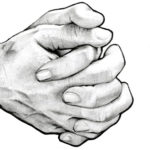
Change is upon us and change can be scary. In fact, there are so many shifts in the world right now that first-rate freak-outs are becoming a daily event for many of us. New situations can force you out of your comfort zone and make you feel unstable and unsafe. If life events are causing you to feel anxious, depressed, vulnerable, scared, or if you are just plain freaking-the-heck-out, you are in need of some calm.
But how can you find calm when everything feels chaotic? If you’re tired of the anxiety but you find you cannot stop it, there is only one thing you can do… adjust your reaction. To do this you must learn to locate your inner peace. This will enable you to weather the storms ahead from a stable and serene foundation, even in the most hectic of times. Keep reading to find out how.
Just Breathe!
Panic is much more than a mental condition; the symptoms of a freak-out are very real to your body. Some of them may include: dizziness, nausea, vomiting, trembling, chest pain, hot or cold sweats, a choking or suffocating sensation, hyperventilation and tunnel vision. These unpleasant feelings only serve to perpetuate your freak-out, prolonging the situation in a most uncomfortable way.
The good news in that, while your mind might be in panic mode, your body doesn’t have to be. You can calm your body by slowing down your breathing, thus causing the various components of your nervous system to fall in line. This step is so simple that people often overlook it, but they shouldn’t because it works. You just have to give it some time and attention to build in its effectiveness.
Your body takes its cues about the state of your emotions via the breath. For example, there is a much different breathing pattern present in someone who is feeling content than in someone who is upset. A mental pattern of contentment is expansive. This allows for a deeper breath intake and a larger expansion of the rib cage and diaphragm. A mental pattern that is anxious is restrictive, causing the body to pull its energies in by conserving the breath and contracting the diaphragm.
The following meditation works as a balm for your nervous system and a stabilizer for your mind, by utilizing both a specific mudra for stability and a breathing pattern for balance. The added focus on breathing helps stop the endless stream of thoughts, giving you a much needed break from the stress and irritants of life.
Try this one when you don’t know what else to do. Even better, practice it regularly and become a tranquil presence for freaked-out friends and family.
Meditation to Prevent Freaking-Out

Posture: Sit in easy pose (legs crossed) with a straight spine. Keep chin tucked-in slightly to form a light neck lock.
Mudra: Interlace the fingers with the right thumb on top. Place the hands at the center of your diaphragm line, touching the body.
Eye Focus: Eyes are closed.
Breath: Concentrate of the breath at the tip of your nose. Notice from which nostril you are predominately breathing through. You should know within about 3 minutes. Then, change it. If you are breathing primarily through your left nostril, consciously change to your right nostril. Be sure to keep your shoulders completely relaxed. Practice changing this breath back and forth for as long as you like.
Time: Up to 31 minutes.*
Alternate Nostril Breathing
If you are in a pinch and cannot perform this meditation, try to focus on which nostril you are using at the time, and switch it as soon as you know. To do so you would simply close off the opposite nostril with a finger, and breathe slowly and deeply through the nostril that correlates with your desired enhancement.
Right nostril breathing is yang in nature. Also known as agni (fire), it has the ability to incite heat in the body. Typically, right nostril breathing will increase anger, impatience, neurotic thoughts and agitation when your mind is in a negative state, but it will increase your energy and invigorate you when your energies are low and in need of a boost. Use right nostril breathing when you need to wake up, energize and warm up your system.
Convers ely, left nostril breathing is yin in nature. It delivers a cooling effect to the body, also known as sitali (cool). It will enhance depression, fatigue, lethargy and worrisome thought patterns when your mind is in a negative state, but it will calm you down when you are in an anxious and overly distressed state. Use left nostril breathing when you are in need of relaxation, or if you just wish to cool down your system. This one also works great if you are running a fever because it helps to cool your system and bring your temperature down.
ely, left nostril breathing is yin in nature. It delivers a cooling effect to the body, also known as sitali (cool). It will enhance depression, fatigue, lethargy and worrisome thought patterns when your mind is in a negative state, but it will calm you down when you are in an anxious and overly distressed state. Use left nostril breathing when you are in need of relaxation, or if you just wish to cool down your system. This one also works great if you are running a fever because it helps to cool your system and bring your temperature down.
In an emergency, using the breath to calm your body will help you to calm your mind. Just focus on your breath, slow it down, and keep it steady as you gradually quiet your mind. The more you practice being in a state of calm, the easier it will be to return there, even in those moments when the world around you is in chaos.
Sail ing the Winds of Change
ing the Winds of Change
In life, change is inevitable. The times to come are certain to bring more of it, and with it some more possible freak-outs. And while you might not be able to escape the things that are causing you to freak-out, you can change your body’s response to them.
Use this meditation to alter your energies, and go from freak-out to feeling fine so you can sail the winds of change with calm and ease.
Meditation is shared with permission from KRI. Author is a KRI/RYT.
Image sources:
https://www.123rf.com/profile_sifotography’>sifotography / 123RF Stock Photo</a>
http://www.deviantart.com/art/Folded-Hands-Drawing-Scan-337711238
http://www.123rf.com/profile_fizkes’>fizkes / 123RF Stock Photo</a>
http://chrissiecool.deviantart.com/art/Plane-Sailing-85561180
Unauthorized use and/or duplication of this material without express and written permission from this site’s author and/or owner is strictly prohibited. Excerpts and links may be used, provided that full and clear credit is given to Mechanics of Being with appropriate and specific direction to the original content.
